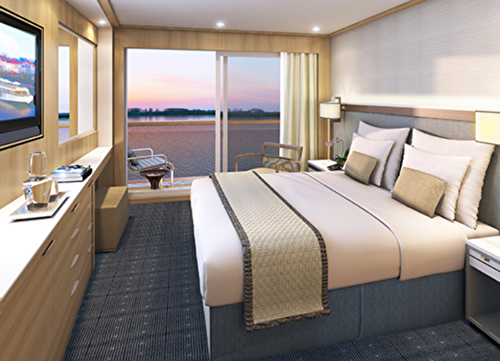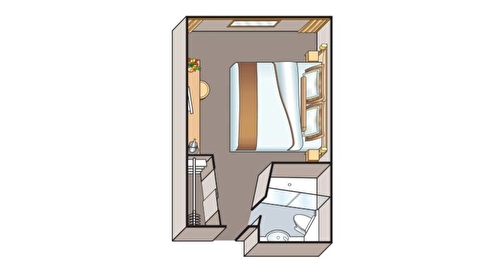Christmas Along the Elbe from Prague
- 26 Nov ‘24
- 9 nights
- Departing from
- Viking Beyla
-
Inside price fromCall for price
-
Outside price fromCall for price
-
Balcony price fromCall for price
-
Suite price fromCall for price
YOUR ITINERARY
Prague - Prague - Prague - Bad Schandau, Germany - Dresden - Meissen - Wittenberg - Potsdam - Berlin, Germany - Berlin, Germany
Prague, capital city of the Czech Republic, is bise...
Prague, capital city of the Czech Republic, is bisected by the Vltava River. Nicknamed “the City of a Hundred Spires,” it’s known for its Old Town Square, the heart of its historic core, with colorful baroque buildings, Gothic churches and the medieval Astronomical Clock, which gives an animated hourly show. Completed in 1402, pedestrian Charles Bridge is lined with statues of Catholic saints.
Prague, capital city of the Czech Republic, is bi...
Prague, capital city of the Czech Republic, is bisected by the Vltava River. Nicknamed “the City of a Hundred Spires,” it’s known for its Old Town Square, the heart of its historic core, with colorful baroque buildings, Gothic churches and the medieval Astronomical Clock, which gives an animated hourly show. Completed in 1402, pedestrian Charles Bridge is lined with statues of Catholic saints.
Prague, capital city of the Czech Republic, is bisected by the V...
Prague, capital city of the Czech Republic, is bisected by the Vltava River. Nicknamed “the City of a Hundred Spires,” it’s known for its Old Town Square, the heart of its historic core, with colorful baroque buildings, Gothic churches and the medieval Astronomical Clock, which gives an animated hourly show. Completed in 1402, pedestrian Charles Bridge is lined with statues of Catholic saints.
Dresden, capital of the eastern German state of Sax...
Dresden, capital of the eastern German state of Saxony, is distinguished by the celebrated art museums and classic architecture of its reconstructed old town. Completed in 1743 and rebuilt after WWII, the baroque church Frauenkirche is famed for its grand dome. The Versailles-inspired Zwinger palace houses museums including Gemäldegalerie Alte Meister, exhibiting masterpieces of art like Raphael’s “Sistine Madonna.”
Meissen is a town of approximately 30,000 about 25 km northwes...
Meissen is a town of approximately 30,000 about 25 km northwest of Dresden on both banks of the Elbe river in the Free State of Saxony, in eastern Germany. Meissen is the home of Meissen porcelain, the Albrechtsburg castle, the Gothic Meissen Cathedral and the Meissen Frauenkirche.
Wittenberg is a university town along the River Elbe in...
Wittenberg is a university town along the River Elbe in eastern Germany, with close ties to Martin Luther, leader of the Protestant Reformation. The Lutherhaus, once a monastery and Luther’s home, is now a museum displaying his personal artifacts and paintings. On the city’s main plaza, Market Square, stands the 13th-century Stadtkirche where Luther preached, known as the Mother Church of the Reformation.
Potsdam is a city on the border of Berlin, Germany. San...
Potsdam is a city on the border of Berlin, Germany. Sanssouci Palace was once the summer home of Frederick the Great, former King of Prussia. On the grounds of the complex, the Renaissance Orangery Palace overlooks Italian-style gardens with fountains. Historic Mill offers city views. English gardens surround neoclassical Charlottenhof Palace. The 19th-century Roman Baths were built in several architectural styles
Berlin, Germany’s capital, dates to the 13th century...
Berlin, Germany’s capital, dates to the 13th century. Reminders of the city’s turbulent 20th-century history include its Holocaust memorial and the Berlin Wall’s graffitied remains. Divided during the Cold War, its 18th-century Brandenburg Gate has become a symbol of reunification. The city’s also known for its art scene and modern landmarks like the gold-colored, swoop-roofed Berliner Philharmonie, built in 1963.
Berlin, Germany’s capital, dates to the 13th centu...
Berlin, Germany’s capital, dates to the 13th century. Reminders of the city’s turbulent 20th-century history include its Holocaust memorial and the Berlin Wall’s graffitied remains. Divided during the Cold War, its 18th-century Brandenburg Gate has become a symbol of reunification. The city’s also known for its art scene and modern landmarks like the gold-colored, swoop-roofed Berliner Philharmonie, built in 1963.
YOUR SHIP - The Viking Beyla
Beyla is a servant to Freyr, Norse god of virility. She looks after his realm with her husband Byggvir. Because of her association with Freyr’s farm, Beyla personifies agriculture and the seeds from which crops grow.
Byggvir shares the root of his name with Bygg, the Old Norse word for barley. True to this origin, he is a mill grinder and bread maker. Beyla’s name may be tied to cows, beans or bees. Together, they represent the enduring spirit of Scandinavia’s bounty, an ideal pair to serve a virile god.
Description
Beyla is a servant to Freyr, Norse god of virility. She looks after his realm with her husband Byggvir. Because of her association with Freyr’s farm, Beyla personifies agriculture and the seeds from which crops grow.
Byggvir shares the root of his name with Bygg, the Old Norse word for barley. True to this origin, he is a mill grinder and bread maker. Beyla’s name may be tied to cows, beans or bees. Together, they represent the enduring spirit of Scandinavia’s bounty, an ideal pair to serve a virile god.
STATEROOMS

suite

balcony


